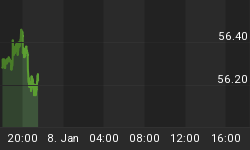Recently, many commodity prices have undergone parabolic increases leading market participants to conclude that high inflation is on the horizon. However, history suggests otherwise as parabolic price increases have always led to parabolic price declines.
As shown below, in 2008, oil ascended to $150 in parabolic form. During that time, peak oil, global growth, and easy money by the Federal Reserve were the only talk on Wall Street. Of course, in hindsight, the surge in price was merely the result of speculation. The collapse in the price of oil reinforced the deflationary pressures already affecting the global economy, culminating in a banking crisis just months after oil's peak. The story of oil demonstrates that investors focus on inflation and growth as prices rise and on deflation and recession as prices collapse.

The charts below of the Dow Jones in 1929, the Nikkei in the 1980s, gold in the late 1970s, and the Nasdaq in the late 1990s tell the same story as oil's 2008 chart. In each case, rising prices captured the attention of the investment community and encouraged optimistic claims about the future that proved entirely wrong as prices imploded.

Today, surges in commodity prices are being attributed largely to the Federal Reserve's second round of quantitative easing. We believe the parabolic increases in commodities, such as silver and cotton, may be indicative of a deflationaryscare in the near future.
Silver - 25 Year Chart
Although silver has not surpassed its all time high, the long term chart shows that previous parabolic increases have been followed by collapses.
Silver - 35 Year Chart
Cotton
By the summer of 2008, mortgage bonds were crashing, Bear Stearns had failed, and Fannie and Freddie were in trouble, yet investors made the costly mistake of positioning themselves to take advantage of loose monetary policy by the Federal Reserve. Today, economic conditions are poor in the United States and most of Europe. The economic backdrop should be the basis for investment decisions yet investors are focused only on the Federal Reserve's easy money. Now that several asset prices have experienced parabolic moves higher, which will likely be followed by dramatic declines, deflationary fears that crippled markets at various times during the past few years should soon reemerge.
















